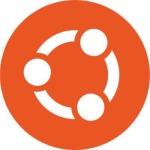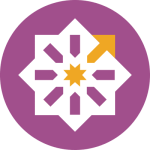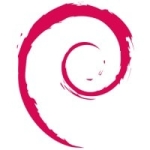What is our primary use case?
I provide consultation to clients for their mission-critical applications. Its primary use case is running containers and microservices on Springboard.
My customers use versions 7.2 or 7.3. I have used versions 8.2 and 8.4. I have tried version 9, but I use version 8.4 specifically because it supports HighPoint RAID for storing the data, whereas the client applications run on the much lower version.
How has it helped my organization?
There are benefits in terms of price, security, and stability to reduce the risk of applications going down or something like that. A vast majority of systems are on Red Hat Enterprise Linux than on other distributions, which is another benefit.
Red Hat Enterprise Linux helps to achieve security standards certification. They use it in the PCI DSS segment, so it enables the applications to be compliant with all these security aspects.
What is most valuable?
Red Hat Enterprise Linux is very stable. It has been in the market for many years, and it is used by large organizations.
Their documentation and knowledge base are valuable. As an individual developer, whenever I have problems, it is easy to find the information. Their knowledge base is seamlessly integrated with the software. Whenever I have a question, it directly takes me to the knowledge base. It is well documented.
It supports scripting very well. Everything is scripted. A snapshot is taken in the VM, and the script is applied. It lends itself to better security and governance processes.
What needs improvement?
Its installation on a RAID or cluster system is something difficult. There are specific teams working on that. The GRUB configuration is also a little different from the other Linux distributions.
In terms of additional features, as technology keeps evolving, the product will also have to evolve. For example, Microsoft Windows has come a long way. In Windows 11, there are so many features that are fundamentally the same as the oldest version, but there are other aspects or processes that have improved. macOS has also evolved over time. Similarly, in the Red Hat Enterprise Linux that I used in 2003 and the one that I am using now, some things are the same and some things have changed. Red Hat can continue to engage clients, understand the use cases, and update them.
For how long have I used the solution?
I have been using Red Hat Enterprise Linux since 2002 or 2003. Red Hat has a vast variety of products. I have only been using Red Hat's operating system. I have not used Red Hat's other products.
What do I think about the stability of the solution?
What do I think about the scalability of the solution?
It is scalable, but I do not have experience in building hundreds of systems on a VM.
How are customer service and support?
I have not used their technical support at all. I only use their documentation portal for self-support. Our production support team interacts with Red Hat's support team.
Which solution did I use previously and why did I switch?
As a developer, I use both SUSE as well as Red Hat Enterprise Linux. My personal preference is Gentoo, but no one runs Gentoo on a production system. Gentoo is better in terms of customization. You can choose what you want.
How was the initial setup?
I am not directly involved in its deployment, but I am planning to build an application. At that time, I will be deploying it myself. In the organization where I work as a consultant, there is a segregation of roles. There is a production support team, there is a development team, and there is a DevOps team. I am a part of the development team.
Its initial setup is straightforward. It is not complex. It also depends on the architecture, high availability, etc.
In terms of deployment, earlier, it was on-prem, but now, it is on the cloud. My client runs about 150 VMs on the cloud in the production, staging, and QA environments. Most of the things have been consolidated into VMs. The migration is complete. It was not that complex.
What was our ROI?
I have not measured that, but it should pay back for itself easily. The ROI should be reasonable. The cost over a period of time should be minuscule. As compared to other OSs, it is better to go with a big, known, and trusted vendor.
What's my experience with pricing, setup cost, and licensing?
As a developer, I pay around 10,000 Yen, which is around $100 per annum for support. SUSE and Red Hat are typically the same without standard support. The pricing is not a big deal. Enterprise customers will pay for the support. Enterprises have the money for one or two products like this that are reliable and supported.
As a consultant, I advise customers to go for support. You mitigate risks by having support. For your personal usage, you can manage without support, but when it comes to the enterprise level, you need to delegate things to people, and it should be through the proper channel. You need a proper point of contact.
What other advice do I have?
I would advise following the best practices recommended by Red Hat. It will minimize the downtime of the application or system. Partner with the vendor and get that support. Know the business case and build a strong relationship with the vendor. Trust them and tell them your use case, and they will come up with the best solution possible.
I am not a big authority on Red Hat or other Linux or Unix products. Only recently, I have been exposed to the concept called hardening and penetration testing. I do not know whether Red Hat provides a hardened version of the OS. My basic distribution is Gentoo which provides a hardened version of Linux. On the client side, the organizations we work with have different departments, such as the security department and the compliance department. For security, they work with various options that are available. For penetration testing, we engage a penetration testing consultancy company once a year.
Overall, I would rate Red Hat Enterprise Linux a nine out of ten.
Disclosure: My company does not have a business relationship with this vendor other than being a customer.

















